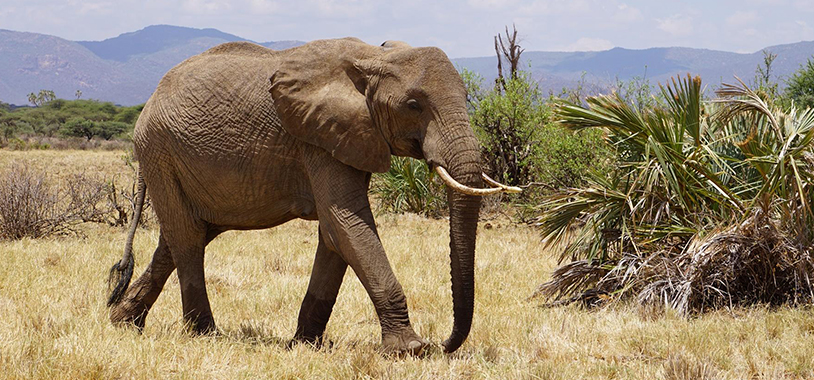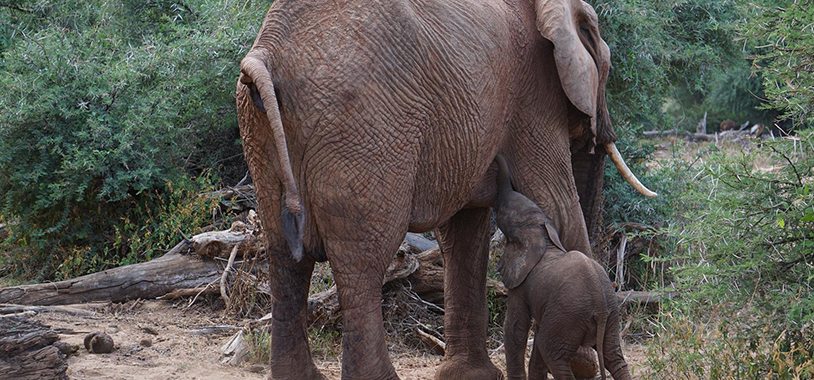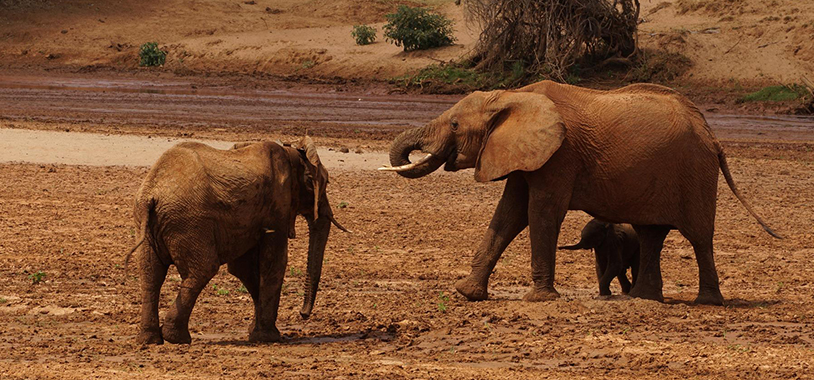It has already been 4 days since I arrived at the Save The Elephants research camp located in the Samburu National Reserve by the side of the wild Ewaso Ng’iro river. With almost daily outings for elephant long term monitoring and mammal censuses in the field, time has passed by so quickly already. I arrived from the Kenyan South Rift where I had spent approximately a month volunteering at the Lale’enok Resource Centre which focuses on fostering opportunities for human-wildlife coexistence through a strong community based conservation program. Here, in the Samburu reserve, the focus is strictly on wildlife. Unlike in conservation areas, livestock grazing is not permitted in reserves and parks. However, the prolonged drought this dry season has led to intrusions by herders in the park in search of vegetation for their livestock (cattle, goats, and sheep), negatively impacting both wildlife and tourism. In Samburu, the perfectly flat landscape of the South Rift is replaced by a more varied terrain. While much of the wildlife is in common, different species and subspecies can be spotted – the Maasai ostrich give way to Somali ostrich, the Maasai giraffe is replaced by the Reticulated giraffe, and the endangered and taller Grevy’s zebra appears alongside the much more common Plains zebra. Elephants are found in both areas, but much to my dismay, the elephant families around Lale’enok appear to be primarily nocturnal, most likely due to higher levels of human activity. Prior to Samburu, home of the second largest population of elephants in Kenya, I had thus never seen an elephant in the wild. It doesn’t take long for me to see the largest land mammal – approximately 30 minutes after arriving I spot a lone bull on the road towards camp. The following days bring many more elephants, and I feel so privileged to be so close to this massive and majestic species, one of the remaining few of the once diverse megafauna that roamed our planet.
On my third day out in the field we encounter the artists family, one of the resident families of the Samburu area. A fantastic surprise is in store – at just a few days old, a young calf greets us, staying very close to her mother Nikki. At around 100 kg (220 pounds) or so, the young calf, with part of her umbilical cord still attached, is still quite wobbly, and even shows a bit of struggle as she stands up to reach her mother’s breast, slightly losing her balance while drinking before reinforcing her posture. Aside from the new calf’s appearance and behavior, the recent nature of the birth is quite apparent from the lose accumulation of coagulating blood still attached to the mother. While I had just seen very young elephants at The David Sheldrick Wildlife Trust in Nairobi, I feel so lucky to have the opportunity to observe a newborn calf in the wild, where elephants belong. The center is home to rescued orphaned elephants, many of which are orphaned following poaching incidents. A large number of the orphans at the center in fact originate from Samburu. At just a few days old, the young calf remains very close to her mother, demonstrating the strong social bond which grows between a calf and its mother in this highly social species. She will remain highly dependent on her mother for at least up to 4 years of age before foraging on her own. We can only hope that this is a sign of good things to come as the population recovers from a strong wave of poaching since 2009. This past year was the first year here in the Samburu-Laikipia ecosystem that the number of births exceeded the number of deaths in the elephant population. In 2012, over 200 deaths representing 70% of the total elephant mortality in the Samburu-Laikipia ecosystem as a whole was attributed to intense poaching.
As we continue following the family through the morning hours, we again spot Nikki, with her young calf, standing a few meters in front of Soutine, a younger female approximately 11 years old. At first, I couldn’t quite tell what was happening, other than the fact that Soutine was clearly interested in this new arrival, standing almost motionless fixating the newborn. Was it sheer curiosity, or was there something more to it? As it turns out, Soutine has been alloparenting another calf for approximately two months or so, and she is likely looking at this new calf for alloparenting. This form of cooperative behavior, whereby a female will ‘babysit’ calves born to other mothers, caring and suckling them, is very common in elephants. This serves the dual purpose of prepping a young female for rearing her own, in addition to providing additional protection and care for the young in the family. Witnessing these highly evolved social behaviors is fascinating and allows to appreciate how sentient, intelligent, and social elephants are.
Nikki’s calf isn’t the first surprise of the day. Despite the heavy rain in the west which had given a short spell of life to the Ewaso Ng’iro in late march, the river bed has gone back to being quite dry and most of the rain clouds spotted have evaded our camp. Suddenly, the skies become cloudier and the humid earth smell associated with rains quickly impregnates the air. Everyone in the car rejoices at the sight of rain as the storm clouds quickly overtake us with strong blasts of wind sweeping the dry dusty soil until the heavy rains settle the dust down, cooling the area significantly in the process. This is the first sizeable rain in the area, hopefully signaling the end of a very long dry season, and the return of high elephant aggregations in the area. As heavy rain drops bounce on our 4×4, the artists are on the move, and we head back to camp. April being the wettest month in Kenya, the rainy season should soon bring much needed continuous rains to the area. The dry landscape will hopefully quickly give way to a lush grass cover, signaling the start of a new cycle of life in the East African savanna.




